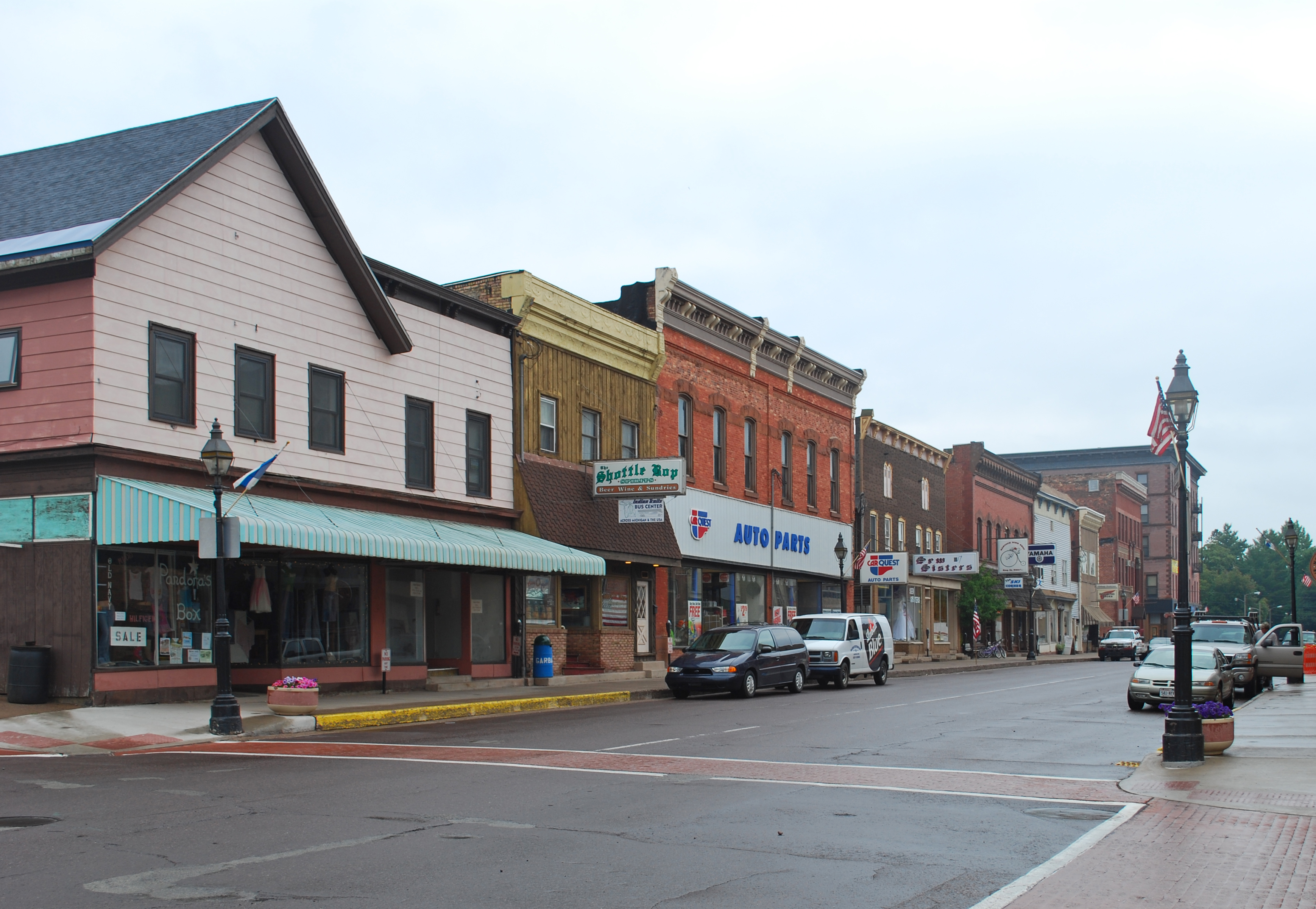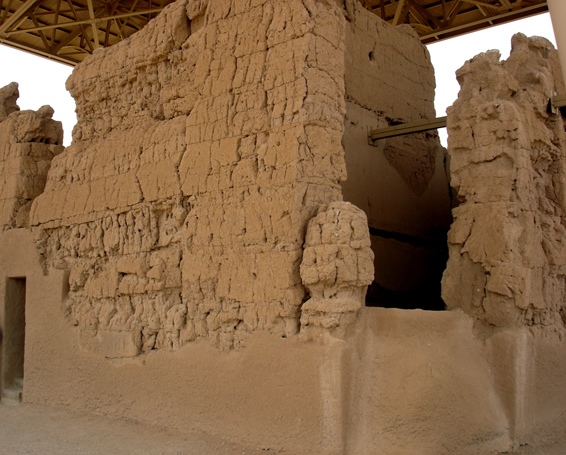|
Gila Bend, Arizona
Gila Bend (; O'odham: Hila Wi:n), founded in 1872, is a town in Maricopa County, Arizona, United States. The town is named for an approximately 90-degree bend in the Gila River, which is near the community's current location. As of the 2020 census, the population of the town was 1,892. Just outside the town is the San Lucy district (O'odham: Weco Cekṣanĭ) of the Tohono O'odham Nation, with a small settlement, San Lucy (O'odham: Si:l Mek) bordering the town itself. History Oyadaibuc The town of Gila Bend is situated near an ancient Hohokam village. Father Eusebio Francisco Kino was the first European to visit, arriving in 1699 on his first journey of exploration to the Colorado River. The Hohokam site along the fertile banks of the Gila River had been abandoned, and other tribes lived in the vicinity. 132 Pima people lived in a ranchería called ''Oyadaibuc'', or as Kino named it ''San Felipe y Santiago del Oyadaibuc'', near the modern town, and other Pima lived i ... [...More Info...] [...Related Items...] OR: [Wikipedia] [Google] [Baidu] |
Town
A town is a type of a human settlement, generally larger than a village but smaller than a city. The criteria for distinguishing a town vary globally, often depending on factors such as population size, economic character, administrative status, or historical significance. In some regions, towns are formally defined by legal charters or government designations, while in others, the term is used informally. Towns typically feature centralized services, infrastructure, and governance, such as municipal authorities, and serve as hubs for commerce, education, and cultural activities within their regions. The concept of a town varies culturally and legally. For example, in the United Kingdom, a town may historically derive its status from a market town designation or City status in the United Kingdom, royal charter, while in the United States, the term is often loosely applied to incorporated municipality, municipalities. In some countries, such as Australia and Canada, distinction ... [...More Info...] [...Related Items...] OR: [Wikipedia] [Google] [Baidu] |
Hohokam
Hohokam was a culture in the Indigenous peoples of the North American Southwest, North American Southwest in what is now part of south-central Arizona, United States, and Sonora, Mexico. It existed between 300 and 1500 CE, with cultural precursors possibly as early as 300 BCE. Archaeologists disagree about whether communities that practiced the culture were related or politically united. According to local oral tradition, Hohokam societies may be the ancestors of the historic Akimel Oʼodham, Akimel and Tohono Oʼodham in Southern Arizona. The origin of the culture is debated. Most archaeologists either argue it emerged locally or in Mesoamerica, but it was also influenced by the Northern Pueblo culture. Hohokam settlements were located on trade routes that extended past the Hohokam area, as far east as the Great Plains and west to the Pacific coast. Hohokam societies received a remarkable amount of immigration. Some communities established significant markets, such a ... [...More Info...] [...Related Items...] OR: [Wikipedia] [Google] [Baidu] |
California Gold Rush
The California gold rush (1848–1855) began on January 24, 1848, when gold was found by James W. Marshall at Sutter's Mill in Coloma, California. The news of gold brought approximately 300,000 people to California from the rest of the United States and abroad. The sudden influx of gold into the money supply reinvigorated the American economy; the sudden population increase allowed California to grow rapidly into statehood in the Compromise of 1850. The gold rush had severe effects on Native Californians and accelerated the Native American population's decline from disease, starvation, and the California genocide. The effects of the gold rush were substantial. Whole indigenous societies were attacked and pushed off their lands by the gold-seekers, nicknamed "forty-niners" (referring to 1849, the peak year for gold rush immigration). Outside of California, the first to arrive were from Oregon, the Sandwich Islands (Hawaii), and Latin America in late 1848. Of the approx ... [...More Info...] [...Related Items...] OR: [Wikipedia] [Google] [Baidu] |
Quechan
The Quechan ( Quechan: ''Kwatsáan'' 'those who descended'), or Yuma, are a Native American tribe who live on the Fort Yuma Indian Reservation on the lower Colorado River in Arizona and California just north of the Mexican border. Despite their name, they are not related to the Quechua people of the Andes. Members are enrolled in the Quechan Tribe of the Fort Yuma Indian Reservation. The federally recognized Quechan tribe's main office is located in Winterhaven, California. Its operations and the majority of its reservation land are located in California, United States. History The historic Yuman-speaking people in this region were skilled warriors and active traders, maintaining exchange networks with the Pima in southern Arizona, New Mexico, and with peoples of the Pacific coast. The first significant contact of the Quechan with Europeans was with the Spanish explorer Juan Bautista de Anza and his party in the winter of 1774. Relations were friendly. On Anza's retur ... [...More Info...] [...Related Items...] OR: [Wikipedia] [Google] [Baidu] |
Francisco Garcés
Francisco Hermenegildo Tomás Garcés (April 12, 1738 – July 18, 1781) was a Spanish Franciscan friar who served as a missionary and explorer in the colonial Viceroyalty of New Spain. He explored much of the southwestern region of North America, including present day Sonora and Baja California in Mexico, and the U.S. states of Arizona and California. He was killed along with his companion friars during an uprising by the Native American population, and they have been declared martyrs for the faith by the Catholic Church. The cause for his canonization was opened by the Church. History Garcés was born April 12, 1738, in Morata de Jalón, Aragon, north-central Spain. He entered the Franciscan Order about 1758 and was ordained a priest in 1763 in Spain.mojavedesert.net: Garcés . accessed 1.1.2012 New Spain |
San Francisco
San Francisco, officially the City and County of San Francisco, is a commercial, Financial District, San Francisco, financial, and Culture of San Francisco, cultural center of Northern California. With a population of 827,526 residents as of 2024, San Francisco is the List of California cities by population, fourth-most populous city in the U.S. state of California and the List of United States cities by population, 17th-most populous in the United States. San Francisco has a land area of at the upper end of the San Francisco Peninsula and is the County statistics of the United States, fifth-most densely populated U.S. county. Among U.S. cities proper with over 250,000 residents, San Francisco is ranked first by per capita income and sixth by aggregate income as of 2023. San Francisco anchors the Metropolitan statistical area#United States, 13th-most populous metropolitan statistical area in the U.S., with almost 4.6 million residents in 2023. The larger San Francisco Bay Area ... [...More Info...] [...Related Items...] OR: [Wikipedia] [Google] [Baidu] |
Tubac
Tubac is a census-designated place (CDP) in Santa Cruz County, Arizona, United States. The population was 1,191 at the 2010 census. The place name "Tubac" is an English borrowing from a Hispanicized form of the O'odham name ''Cuwak'', which translates into English as "place of dark water". When first taken into Spanish speech, it was spelled ''Tubaca''. Finally, over time, the latter "a" was dropped. Tubac is situated on the Santa Cruz River. Tubac was the original Spanish colonial garrison in Arizona. It was depopulated during the O'odham Uprising in the 18th century. During the 19th century, the area was repopulated by miners, farmers and ranchers, but the town of Tubac is best known today as an artists' colony. History Established in 1752 as a Spanish presidio, the first Spanish colonial garrison in what is now Arizona, Tubac was one of the stops on the Camino Real (the "Royal Road") from Mexico to the Spanish settlements in California. Tubac's most famous Span ... [...More Info...] [...Related Items...] OR: [Wikipedia] [Google] [Baidu] |
Juan Bautista De Anza
Juan Bautista de Anza Bezerra Nieto (July 6 or 7, 1736 – December 19, 1788) was a Novohispanic/Mexican expeditionary leader, military officer, and politician primarily in California and New Mexico under the Spanish Empire. He is credited as one of the founding fathers of Spanish California and served as an official within New Spain as Governor of the province of New Mexico. Early life Juan Bautista de Anza Bezerra Nieto was born in Fronteras, New Navarre, New Spain (today Sonora, Mexico) in 1736 (near Arizpe), most probably at Cuquiarachi, Sonora, but possibly at the Presidio of Fronteras. His family was a part of the military leadership in New Spain (''Nueva España''), as his father and maternal grandfather, Captain Antonio Bezerra Nieto, had both served Spain, their families living on the frontier of Nueva Navarra. He was the son of Juan Bautista de Anza I. It is traditionally thought that he may have been educated at the College of San Ildefonso in Mexico City ... [...More Info...] [...Related Items...] OR: [Wikipedia] [Google] [Baidu] |
Agua Caliente, Arizona
Agua Caliente in Maricopa County, Arizona on the border with Yuma County, is a place north of the Gila River near Hyder, Arizona. Named 'Santa Maria del Agua Caliente' in 1744 by Father Jacob Sedelmayer. In 1775, Father Francisco Garces used the current short form. The location was the site of a resort established at the site of nearby hot springs. Agua Caliente, a name derived from Spanish meaning "hot water", received its name from nearby hot springs which were originally used by the local Indigenous population. Demographics Agua Caliente's population was 113 in 1900. Agua Caliente appeared as the Agua Caliente Precinct of Maricopa County on the 1910 U.S. Census. It appeared again in 1920 as Precinct 54 and 1930 simply as Agua Caliente Precinct again. In the latter census, it reported a White majority. With the combination of all Arizona county precincts into 3 districts each in 1940, it did not formally appear again on the census to date. Agua Caliente's population in 1940 ... [...More Info...] [...Related Items...] OR: [Wikipedia] [Google] [Baidu] |
Maricopa People
The Maricopa or PiipaashBarry Pritzker, ''A Native American Encyclopedia.'' Oxford: Oxford University Press, 1998; p. 56 are a Native Americans in the United States, Native American tribe, who live in the Salt River Pima-Maricopa Indian Community and Gila River Indian Community (both in Arizona) along with the Pima people, Pima, a tribe with whom the Maricopa have long held a positive relationship. The Maricopa at the Salt River Pima-Maricopa Indian Community consist mostly of Xalychidom Piipaash members and are concentrated in Lehi, Arizona, Lehi. The Maricopa at the Gila River Indian Community are concentrated in Maricopa Colony, Arizona, Maricopa Colony. The Maricopa are a River Yuman group, formerly living along the banks of the Colorado River. Names The neighboring Akimel O'odham (Pima) and future allies, called these people the Kokmalik'op ('enemies in the big mountains'),. The Spanish transliterated this to ''Maricopa''. They call themselves Piipaa, Piipaash or Pee-Po ... [...More Info...] [...Related Items...] OR: [Wikipedia] [Google] [Baidu] |
Ranchería
The Spanish word ranchería, or rancherío, refers to a small, rural settlement. In the Americas the term was applied to Indigenous peoples of the Americas, native villages or bunkhouses. Anglo-Americans adopted the term with both these meanings, usually to designate the residential area of a Ranchos of California, rancho in the Southwestern United States, American Southwest, housing aboriginal farm hands, ranch hands and their families. The term is still used in other parts of Hispanic America, Spanish America; for example, the Wayuu tribes in northern Colombia call their villages ''rancherías''. The ''Columbia Encyclopedia'' describes it as: :a type of communal settlement formerly characteristic of the Yaqui people, Yaqui Indians of Sonora, Tepehuanes of Durango, Mexico, and of various small Native American groups of the Southwestern United States, Southwestern U.S., especially in California. These clusters of dwellings were less permanent than the pueblos (see Pueblo) but mo ... [...More Info...] [...Related Items...] OR: [Wikipedia] [Google] [Baidu] |






